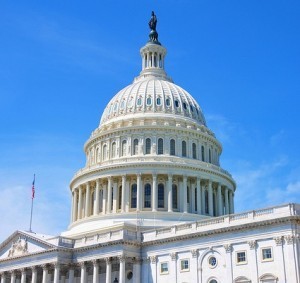The Sequester Starts: Should We Worry?
 The sequester begins today. It’s the end of federal spending as we know it, and most Americans feel fine - but should you?
The sequester begins today. It’s the end of federal spending as we know it, and most Americans feel fine - but should you?
Monday we detailed exactly what sequestration is. In short, it’s a package of spending cuts to the federal budget. The cuts will total $1.2 trillion over 10 years and will be split evenly between defense and domestic discretionary spending. In a recent poll, 37% of Americans said that they’d like the sequestration to go forward as scheduled. Coincidentally, nearly as many (38%) reported following the news around the sequester closely – all of this despite the President’s warning that failure to avoid the cuts would be “deeply destructive to national security, domestic investments, and core government functions.”
It seems that when it comes to today’s major budget decision, many Americans don’t know enough about it or just don’t care.
But it’s important. Here are some general implications of the sequester on the economy and our pursestrings.
Not an Overnight Threat, But…
Chuck Jaffe of The Wall Street Journal’s MarketWatch wrote that not everyone is worried because the cuts won’t all take place at once. Instead they’ll happen gradually, hopefully giving the economy time to adjust. “It’s not a flick-the-switch, lights-out deal,” according to Jaffe, but there will be some impact. “Those cuts will hurt the economy at the very time when it needs a stimulus to keep going, and there’s no telling just where the trickle-down impact of a sluggish economy with recessionary drop-offs in gross domestic product would go.”
Impact on Economic Growth
Fed Chairman Ben Bernanke weighed in this week in his testimony before the Senate Banking Committee. Bernanke quoted the Congressional Budget Office, testifying that the cuts would contribute to an estimated 0.6 percentage point drag on economic growth. He said, “Given the still-moderate underlying pace of economic growth, this additional near-term burden on the recovery is significant. Moreover, besides having adverse effects on jobs and incomes, a slower recovery would lead to less actual deficit reduction in the short run for any given set of fiscal actions.”
Unemployment
Aside from a hit to the economy, a government shutdown federal employees without work. So far, the White House has announces plans for furloughs in most agencies. Fewer federal workers could also mean flight delays, longer wait times at border crossings, limited access to government parks and services and furloughs of civilian employees at several other agencies.
Fewer Government Services/Jobs
Social Security, Medicaid, Pell grants and veteran benefits are exempt from sequestration cuts, but experts agree that they’ll still be catastrophic with many significant government services arbitrarily interrupted. More than$500 billion will be cut from the Defense Department and other national security agencies. The rest would come from domestic services including parks, federal courts, the FBI, food inspections and housing aid. Individual states would also be hard hit. According to the White House, in Virginia sequestration would result in funds for 14,000 fewer public school students for example. Washington D.C. would lose nearly $80,000 in grants that support law enforcement and drug treatment.
Stock Market Still Stable
On the bright side for investors, so far the stock market has been pretty nonchalant about Washington’s warnings of pending doom. “The sequester is very much an important event because it will provide some economic head winds,” said Andres Garcia-Amaya, a global market strategist at JP Morgan Funds to InvestmentNews. “But the markets have shrugged it off because everyone knew for more than a year that it was coming, and it has already been factored in.”
The economic experts and most Americans are still hoping Congress can come to an agreement on the spending cuts however. At 10 A.M., the President and Congressional leadership met to discuss the possibility of a last-minute deal. If one can’t be brokered, by 11:59 p.m., the President will be required to sign an order enacting the sequester.
Photo Courtesy, Glyn Lowe Photoworks.




